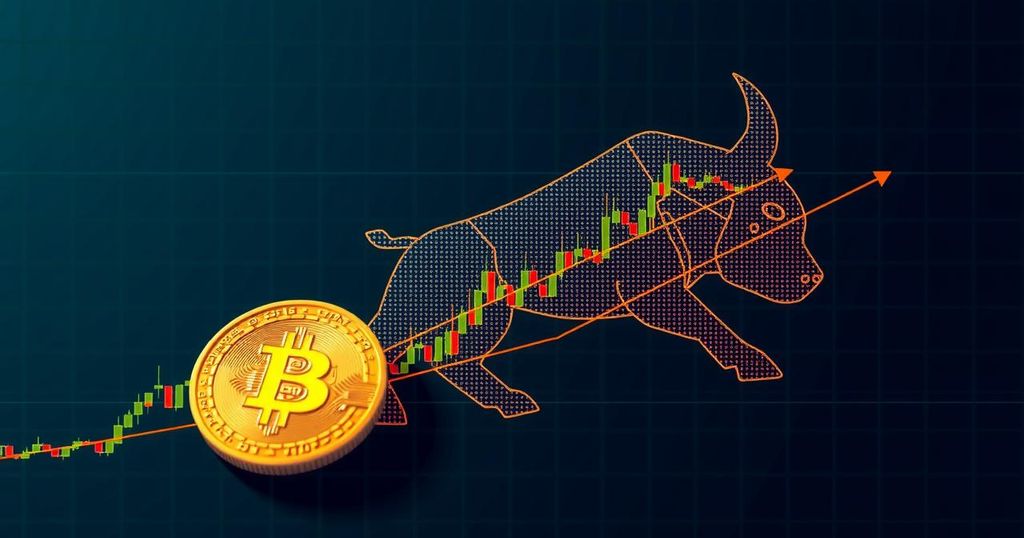Analyzing the Future of Bitcoin Price Predictions Amid Market Shifts
Bitcoin is the leading decentralized cryptocurrency whose price remains unpredictable despite recent trends that suggest a potential upward movement following a halving event in April 2024. Factors affecting its value include increasing adoption, supportive regulatory developments, and broader macroeconomic conditions. Investors are encouraged to consider technical indicators and remain vigilant about global occurrences that may impact market sentiment as they navigate this volatile asset class.
Bitcoin, the foremost decentralized cryptocurrency, continues to captivate investors and analysts with its volatile price movements within the digital asset market. The latest halving event has raised expectations for a potential bull run, compelling investors to scrutinize various predictive factors surrounding Bitcoin’s value. The factors influencing Bitcoin price include adoption trends, regulatory updates, and macroeconomic conditions.
Adoption of Bitcoin surged recently, particularly following the U.S. Securities and Exchange Commission’s approval of spot Bitcoin exchange-traded products in early 2024. This move signals enhanced institutional interest and could signify a broader acceptance of Bitcoin in mainstream finance. Moreover, robust institutional investments have been linked to positive price fluctuations, reflecting a growing synergy between Bitcoin and traditional financial systems.
On the regulatory front, decisions by agencies like the SEC and the Commodities Futures Trading Commission have contributed to a more favorable market environment for Bitcoin. The classification of Bitcoin as a commodity and the recent authorization of options contracts on Bitcoin exchange-traded funds further legitimize its standing, potentially attracting more institutional capital.
Macroeconomic factors also play a crucial role in Bitcoin’s valuation, as aspects such as interest rates and inflation exert pressure on market dynamics. Additionally, the halving process, occurring approximately every four years, is designed to control Bitcoin’s inflation by reducing the rate of new Bitcoin creation, thereby creating upward pressure on prices by limiting supply.
Technical analysis remains instrumental in gauging Bitcoin price trends. Tools such as moving averages and the Relative Strength Index (RSI) equip traders with insights that can aid in mastering the complexities of Bitcoin’s price cycles. Furthermore, investors must remain vigilant regarding global occurrences that may influence market sentiment, particularly amid economic fluctuations and geopolitical uncertainties.
The outlook for Bitcoin in 2024 is marked by optimism tempered with caution. Despite the positive implications of the recent halving event, inflationary concerns linger, necessitating a prudent approach toward investment decisions. Investors should closely monitor market sentiment, regulatory developments, and adopt technical indicators to navigate this ever-evolving landscape.
Bitcoin was launched in October 2010 and is recognized as the pioneering cryptocurrency, operating on a decentralized public ledger known as blockchain technology. As part of a transforming financial landscape, Bitcoin has recently undergone a consolidation phase following a period of significant downturns during the pandemic, re-establishing itself as a relevant digital asset. Analysts observe that external factors, including regulatory changes and macroeconomic influences, will significantly affect Bitcoin’s trajectory moving forward.
In conclusion, Bitcoin’s journey through 2024 appears fraught with opportunities alongside challenges. With the recent halving event serving as a catalyst, both regulatory advancements and macroeconomic pressures will play critical roles in shaping price trajectories. Investors are advised to approach predictions with care, integrating technical analysis and remaining aware of global financial conditions to inform their strategies in the unpredictable cryptocurrency market.
Original Source: www.entrepreneur.com








Post Comment